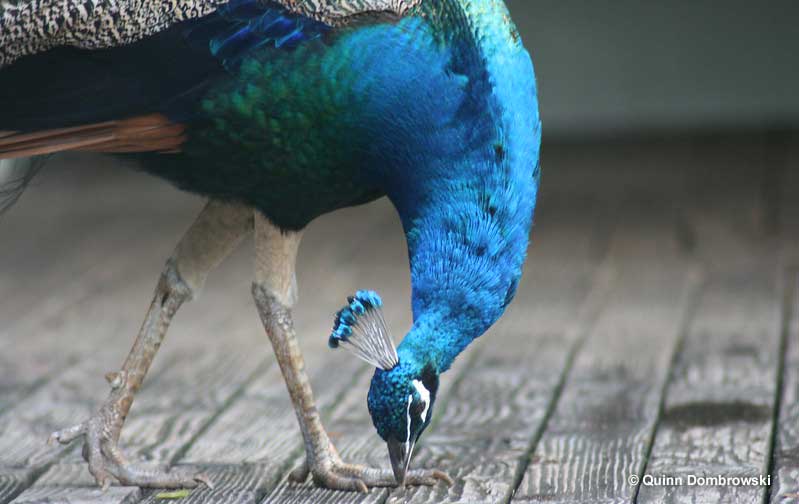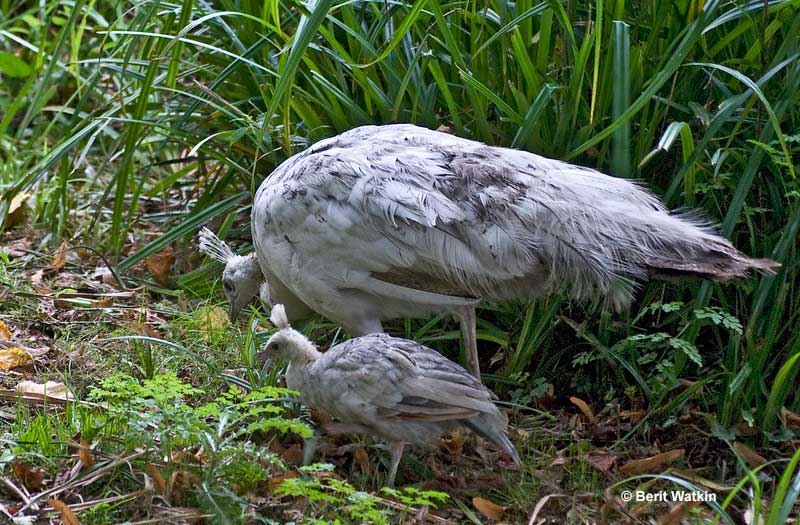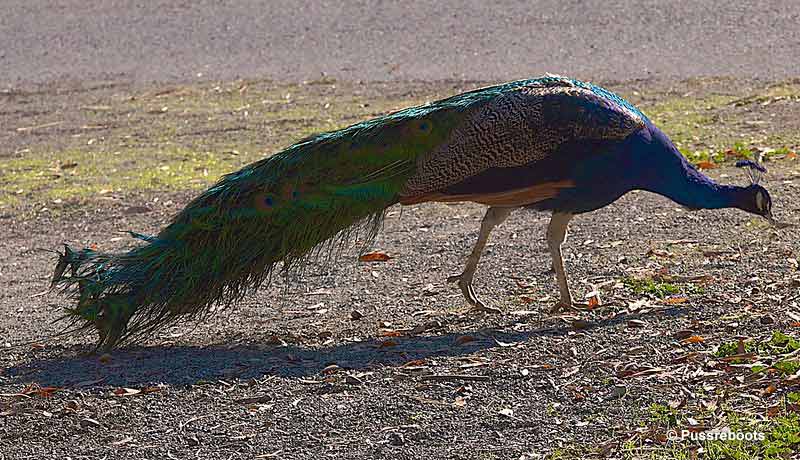
Peacocks are simply spectacular. Their plumage is so over the top that it’s hard to believe that these loud and fancy pheasants can be wild birds!
However, it’s true that peacocks do live in wild areas of India and Sri Lanka. They have always lived in those countries and thrive in tropical forest habitats.
How can such fancy birds survive in the wild? What do they eat? See this article to learn all about the diets of peacocks!
On this page
The Diet of Peacocks
In their wild range, peacocks are pretty common birds. These birds are also easy to take care of and common in captivity. One of the keys to their success is their diet. Basically, these exotic birds eat just about anything.
Peacocks are pretty much the opposite of fussy eaters. In their wild tropical southern Asian habitats, these big birds forage rather like giant, beautiful chickens.
Small flocks walk in forest and open areas and keep an eye on the ground for any possible food items. When they see food, they simply pick it up with their beak and eat it. For a peacock, “food” can take the form of many seeds and grain, berries and other fruits, insects, worms, and many small animals.
These birds actually need a lot of protein and they get it by eating mice, frogs, small lizards, and even small snakes. They aren’t too fussy about the snakes they catch either and will even kill small venomous serpents!
They also eat scorpions, centipedes, flower petals, and beans, and like to forage in farm fields in the early morning before the farmers arrive. In some places, peacocks also sneak into backyards to pick up feed and grain left on the ground for chickens.
What do domesticated peacocks eat?
Domesticated peacocks aren’t all that different from their wild relatives. Like the wild birds, they eat nearly anything they can find. In fact, when you have pet peacocks, you have to really be careful about keeping garbage in a secure place.
These birds are so omnivorous that they won’t hesitate to peck into garbage bags! Fortunately, they also like lots of other food and are happy to wander through the garden and pick up insects, worms, and seeds.
With that in mind, these big birds are a great form of natural pest control. They might also try to eat some of the vegetables and fruit but will do a good job eating larvae, grasshoppers, and other garden pests.
Since gardens in the USA don’t usually fulfill a peacock’s dietary requirements, they also need some other food items. Fortunately, peacocks love to eat corn and other grains, berries, all sorts of kitchen scraps, peanuts, peas, and cabbage.
We also have to make sure that peacocks have plenty of protein. They can eat some cat and dog food but once in a while. Instead, give peacocks lots of the same bird feed used for feeding turkeys and chickens, and the occasional mouse (the same mice that pet stores sell to feed snakes).
What do baby peacocks eat?
Baby peacocks act a lot like babies of other members of the pheasant family, chickens, and related birds. Shortly after hatching, they start foraging on their own but stay near their mother.
Like the adult peacocks, they feed by picking up food items from the ground. As they walk along, the young birds constantly watch for anything that looks like food and pick at it with their beaks.
Although they eat the same things as adult birds, they tend to eat smaller seeds and smaller insects. They also eat berries but are probably too small to catch most mice, lizards, and snakes.

Domesticated baby peacocks are pretty easy to raise, but they do require some care.
To help them grow healthy and strong, they need a lot of protein during the first three months. In the wild, young birds obtain that protein from lots of insects and other small creatures.
However, on a farm or garden in North America or Europe, it can be hard for baby peacocks to find the same amount of protein. To make up for it, peacock owners usually supplement the baby bird’s diet with commercial gamebird food. This special bird feed acts as a good substitute for the protein-rich diet of young birds in the wild.
Diets of Peacocks – Some Memorable Facts
- There are three species of peacocks; the familiar Indian Peacock (or Peafowl), the endangered Green Peacock (or Peafowl) of southeastern Asia, and the little-known Congo Peacock of the Democratic Republic of the Congo.
- In captivity, peacocks can live for 50 years! In the wild, they usually live for 20 years.
- These hungry birds commonly eat frogs and salamanders.
- This big bird loves berries but will also eat just about any fruit that you give them.
- Peacocks love to eat insects, other arthropods, and worms. They like to scratch the ground to dig up these small creatures but can also pick them from vegetation.
- Foods that should not be given to peacocks include candy, junk food, processed meats, and chocolate.
- In some parts of India, peacocks can cause crop damage by eating chickpeas, millet, and other types of grains.
- Peacocks have been kept as pets for more than 2,000 years.
Frequently Asked Questions
Do peacocks eat meat?
Peacocks are omnivores, which means they eat pretty much everything, including meat. They usually go for smaller mammals when the opportunity presents itself.
Do peacocks eat insects?
Insects area fan-favorite for peacocks! They usually forage or them throughout the day.
How long do peacocks live?
In the wilderness, the average age of peacocks ranges from 15 to 20 years, but in captivity, they can live 30+ years old.


